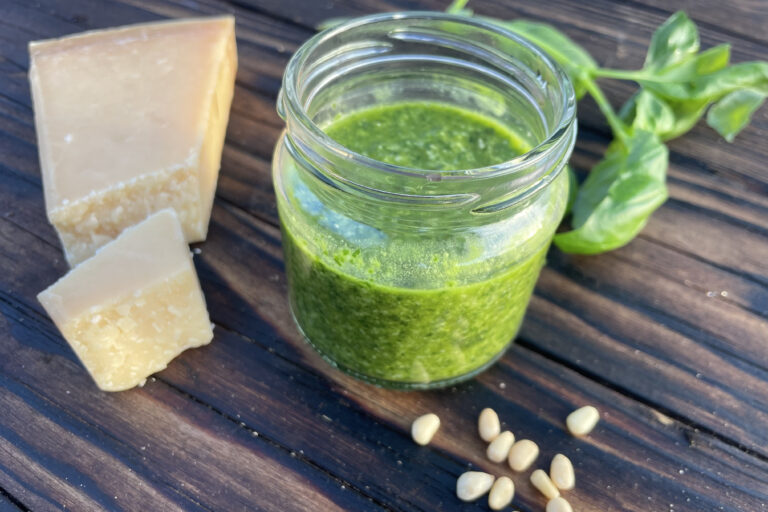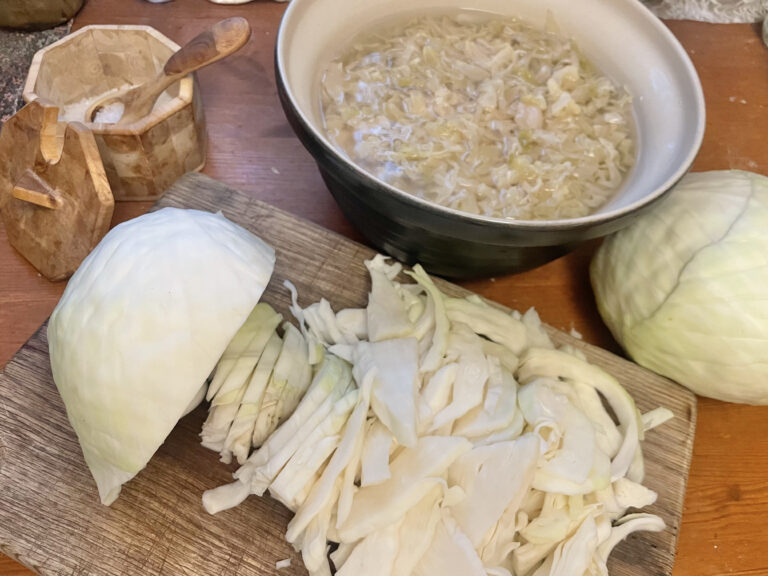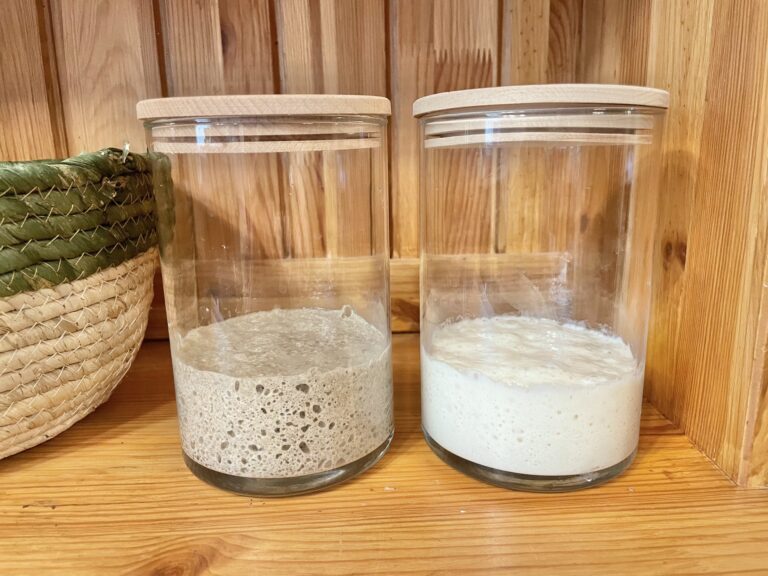Apple jam is truly something I couldn’t imagine getting through winter without. One of the best things about the chilly winter months is opening a jar of homemade jam and savoring the taste of autumn.
Often, our gardens overflow with apples, making it easy to prepare a generous supply of apple jam. In winter, my favorite way to use apple jam is as a topping for crumble pie. Since my kids are huge fans of porridge, so a lot of jam also goes on their morning porridge.

Homemade jam is the best because you can customize it to your taste, and it contains no harmful additives. Making apple jam is actually quite simple. Yes, it takes a little time and preparation, but it’s absolutely worth the effort. With a handy guide, cooking jam isn’t difficult or tedious at all.
Before starting, come and follow me on Instagram, Facebook, and Pinterest!
Types of Apple Jam
There are many ways to make apple jam—chunky, creamy, or purée-like, with or without peels. Some people add pectin to make the jam thicker. You can also mix in pears, or cinnamon. When I was a kid, my mom used to make apple-lingonberry (lingonberries are popular in Norhern-Europe) jam, which was one of my favorites.
Best Apples for Jam
You can use almost any type of apple for jam. It’s a great way to make use of what your garden offers. But if you have a choice, think about the type of jam you want.
For example, I like jam with small apple chunks, so I prefer apples with firmer flesh for this. My father, on the other hand, loved smooth, chunk-free apple jam. Just weeks before he passed away from cancer, we peeled apples together to make jam. I never peel apples for my family, but for him, I carefully peel them all.
For smooth jam, softer apples with mushy flesh are best, as they break down quickly. If you prefer a thicker jam, use tart apples, which naturally contain more pectin.
What is Fruit Pectin
Pectin is a natural thickener found in fruits and berries. Some fruits have more pectin than others. Think of how runny blueberry or raspberry jam is compared to apple or cranberry jam, which is typically thicker. Pectin is what makes jam thicker.
Tart, slightly under-ripe green apples have more pectin, making them a great choice for apple jam. You can also boil pectin from tart apples or apple scraps to add to jams low in pectin to help thicken them.
What to Do with Leftover Apples
Never throw away apple scraps! Apple peels and cores are perfect for making apple cider vinegar. It takes a couple of months to ferment, but the result is worth it.
Apple cider vinegar has wonderful health benefits and can help protect against various illnesses. You can also use it as a salad dressing or for flavoring other dishes. If making vinegar doesn’t appeal to you, compost the leftovers instead.
Sugar in Jam
A common rule is to use sugar in a 1:1 or 2:1 ratio—meaning one or two parts fruit to one part sugar. You can add more sugar if needed. Sweeter apples won’t need as much sugar as tart ones, so add sugar cautiously—it’s easy to add more but impossible to remove it.
While white granulated sugar is typically used, I recommend using unrefined brown sugar if possible.
What Else Can You Make with Fresh Apples?
Some years bring an apple surplus, and it’s hard to know what to do with them all. Thankfully, there are plenty of things you can make: apple juice, apple cider, and apple wine, which use large quantities of apples at once.
You can also make apple jelly, dried apples, apple cider vinegar, apple butter, apple sauce, or apple pie filling. The apple jam from this recipe pairs well with pancakes, ice cream, bread, oatmeal, or in a delicious apple crumble.

FAQ
Do I need to peel the apples before making jam?
The short answer is no. If you want a chunkier jam, the peels actually help the apples hold together. For a smoother jam, you can peel them. It’s entirely up to you.
Do I need to add lemon juice to the apple jam?
Adding lemon juice isn’t necessary. You can add a little if you’re worried the jam isn’t acidic enough and might spoil, but I don’t think this will be a problem since apples are usually tart.
Can you overcook apple jam?
Yes. Overcooking the jam with sugar can cause the apple pieces to turn brown, harden, and become rubbery because sugar toughens the apple skins.
Ingredients and Equipment
Check the recipe card at the bottom of the post for ingredient quantities and nutritional information!
Large pot
Long metal or wooden spoon
Sugar (you can use both brown and white sugar)
Apples
Cinnamon (optional)
Lemon juice (optional)
How to Make Apple Jam
- Prepare the glass jars by ensuring they’re thoroughly cleaned and ready to use.
- Clean the apples: remove the cores, and peel them if desired. Make sure to remove all core pieces, including the tough skins around the seeds, as these won’t soften when cooked and could spoil the jam.
- Add the diced apple to a pot, stirring frequently at first to prevent the apples at the bottom from burning. Soon, the apples will release moisture, reducing the risk of sticking.
- Simmer the jam for at least 15 minutes to thoroughly heat the apples.
- Once the jam has reached your desired consistency, add the sugar and cook for a few more minutes to ensure the sugar fully dissolves and blends in.
- Spoon the fresh jam into the glass jars and ensure there are no air bubbles inside the jars.
- Clean the rims of the jars if necessary.
- Close the jars with boiled lids, tightening them only with the strength of your fingertips.
- Place the filled jars in a water bath for 15 minutes, ensuring they’re fully submerged.
- Let the jars cool gradually on a table. As they cool, the lids will seal under a vacuum.
Ideas and Tips
- You can add ground cinnamon for extra flavor. Cinnamon has antibacterial properties that can help prevent spoilage, but I usually don’t add it to my jam.
- Try delicious baked apples too!
- For a smooth jam, use an immersion blender or a potato masher to perfect the texture after cooking.
- Use a large, wide pot for even cooking. If the pot is narrow and tall, the jam may cook unevenly, with the bottom cooking faster than the top.
- Don’t pour hot jam into cold jars—the sudden temperature change can cause the jars to crack.


How to Make Apple Jam with Fresh Apples (Easy Recipe)
One of the best things about the chilly winter months is opening a jar of homemade jam and savoring the taste of autumn.
Ingredients
- 1 kg of apples
- 0,5-1 kg of brown sugar
- Cinnamon (optional)
- Lemon juice (optional)
Instructions
- Prepare the glass jars by ensuring they’re thoroughly cleaned and ready to use.
- Clean the apples: remove the cores, and peel them if desired. Make sure to remove all core pieces, including the tough skins around the seeds, as these won’t soften when cooked and could spoil the jam.
- Add the diced apple to a pot, stirring frequently at first to prevent the apples at the bottom from burning. Soon, the apples will release moisture, reducing the risk of sticking.
- Simmer the jam for at least 15 minutes to thoroughly heat the apples.
- Once the jam has reached your desired consistency, add the sugar and cook for a few more minutes to ensure the sugar fully dissolves and blends in.
- Spoon the fresh jam into the glass jars and ensure there are no air bubbles inside the jars.
- Clean the rims of the jars if necessary.
- Close the jars with boiled lids, tightening them only with the strength of your fingertips.
- Place the filled jars in a water bath for 15 minutes, ensuring they’re fully submerged.
- Let the jars cool gradually on a table. As they cool, the lids will seal under a vacuum.
Nutrition Information:
Yield: 1 Serving Size: 1Amount Per Serving: Calories: 19527Total Fat: 2gSaturated Fat: 0gTrans Fat: 0gUnsaturated Fat: 1gCholesterol: 0mgSodium: 1411mgCarbohydrates: 5045gFiber: 25gSugar: 4955gProtein: 9g





